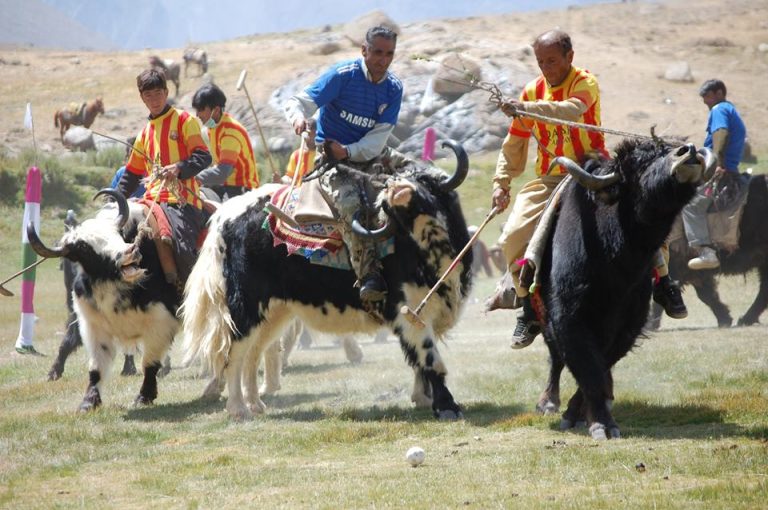General Rules of Sandboarding
When it comes to sandboarding, safety is paramount. Imagine the thrill of gliding down massive sand dunes, feeling the rush of wind against your face. But before you dash off, remember that mastering this sport requires more than just bravery. It demands a keen understanding of the general rules that govern sandboarding activities. Are you ready to discover the essential guidelines that will ensure your sandboarding experience is both enjoyable and safe?
Proper Equipment for Sandboarding

To fully enjoy the thrill of sandboarding, ensure you have the proper gear that guarantees safety and enhances your experience. Gear maintenance is crucial for a seamless sandboarding adventure. Before hitting the dunes, check your equipment for any signs of wear and tear. Tighten loose screws, inspect bindings, and ensure your board is waxed for optimal performance. Proper gear storage is also essential. Store your board in a cool, dry place away from direct sunlight to prevent warping.
When it comes to attire, opt for comfortable and breathable clothing that allows for ease of movement. Since sandboarding involves a lot of walking uphill, consider moisture-wicking fabrics to keep you dry and prevent chafing. Sunglasses and sunscreen are a must to shield yourself from the sun's glare and harmful UV rays.
Footwear is another critical aspect of your sandboarding setup. Choose closed-toe shoes with good ankle support to protect your feet from hot sand and potential injuries. Sneakers or hiking shoes are ideal for navigating the sandy terrain while providing the necessary grip for stability.
Choosing the Right Sandboarding Location
When seeking the perfect spot for sandboarding, consider the terrain and weather conditions to ensure an exhilarating and safe experience. Whether choosing a local or international sandboarding location, each offers a unique experience worth exploring. Local spots may provide convenience and easy access, while international locations can offer vast sand dunes and a sense of adventure like never before.
Local sandboarding locations are fantastic for a quick adrenaline fix. They are easily accessible and allow for spontaneous trips whenever the sand beckons. However, these areas may have smaller dunes and can get crowded, impacting the overall experience. On the other hand, international destinations boast massive dunes that stretch as far as the eye can see. These locations often offer a sense of freedom and vastness that is hard to match, providing a thrilling experience for sandboarding enthusiasts.
It's crucial to consider the environmental impact on sand dune stability when choosing a location. Sand dunes are fragile ecosystems that can be easily damaged by human activity. Be sure to choose locations that promote responsible sandboarding practices to help preserve these natural wonders for future generations to enjoy. By selecting a sandboarding spot that aligns with sustainable practices, you can ensure a thrilling experience while also protecting the environment.
Understanding Sand Dune Conditions

Ready to conquer the sand dunes? Understanding sand dune conditions is key to your sandboarding adventure. Sand dune terrain, wind direction impact, and safety precautions will be your compass through this thrilling journey. Let's dive into the heart of these elements and prepare for an epic ride!
Sand Dune Terrain
Navigating the varied terrain of sand dunes requires a keen understanding of the shifting conditions and natural obstacles present. To conquer these majestic landscapes, remember:
- Rippled Dunes: Picture endless waves frozen in time, offering thrilling slopes for your rides.
- Star Dunes: Majestic peaks and sharp ridges challenge your skills, promising an adrenaline rush.
- Transverse Dunes: Imagine vast hills that shift with the wind, creating dynamic paths for your adventure.
- Barchan Dunes: These crescent-shaped dunes demand finesse as you carve through their unique formations.
With this mental map of dune terrains, you're ready to embrace the liberating spirit of sandboarding and carve your path through the shifting sands.
Wind Direction Impact
To fully master sandboarding, understanding how the wind direction impacts sand dune conditions is crucial for maximizing your riding experience. Wind speed and direction play a significant role in your speed and control while cruising down the dunes. When the wind is at your back, it can propel you forward, increasing your speed and providing an exhilarating ride. However, if the wind is blowing against you, it may slow you down and require more effort to maintain control. Keep in mind that crosswinds can also affect your stability, so adjusting your stance and technique accordingly is essential. By harnessing the power of the wind and adapting to its direction, you can enhance your sandboarding skills and enjoy a more thrilling adventure.
Safety Precautions
When sandboarding, ensuring your safety requires a keen understanding of the ever-changing sand dune conditions. Being prepared for any situation is key to a successful adventure. Here are some vital safety precautions to keep in mind:
- Check the Weather: Monitor wind speed and direction to anticipate changes.
- Inspect the Sand: Look out for rocks or debris that could cause accidents.
- Stay Hydrated: Bring plenty of water to prevent dehydration under the hot sun.
- Know Emergency Procedures: Familiarize yourself with first aid and emergency response protocols in case of injuries.
Enjoy the thrill of sandboarding while staying mindful of your safety and well-being. Adventure awaits, but preparedness is essential for a worry-free experience.
Checking the Weather Forecast

Before embarking on your sandboarding adventure, make sure to check the weather forecast for optimal conditions. The weather plays a crucial role in determining the quality and safety of your experience on the dunes. By staying informed about the forecast, you can be better prepared for what nature has in store for you.
—
Importance of Checking the Weather Forecast
To highlight the significance of checking the weather forecast before heading out for your sandboarding escapade, let's take a look at how different weather conditions can impact your experience:
| Weather Condition | Forecast Impact | Sandboarding Safety |
|---|---|---|
| Sunny and Clear | Ideal for sandboarding with good visibility and warmth. | Low chances of unexpected weather changes, ensuring a safer ride. |
| Strong Winds | Can make sandboarding challenging and affect control. | May pose risks of sand blowing into eyes, impacting safety. |
| Thunderstorms | Dangerous for sandboarding due to lightning and heavy rain. | High risk of accidents, best to avoid sandboarding during such conditions. |
| Foggy Conditions | Reduced visibility, making navigation difficult. | Increases the chances of getting lost or colliding with obstacles. |
| Extreme Heat | Can lead to exhaustion and dehydration. | Heightened risk of heat-related illnesses, emphasizing the need for proper hydration. |
Warm-Up and Stretching Routines
Before you hit the sandy slopes, it's crucial to warm up your muscles and stretch to prevent injuries and enhance your performance on the board. Not only will warming up increase blood flow and flexibility, but stretching can also improve your balance and agility while sandboarding. Stay tuned for some routine suggestions to get your body ready for an exhilarating sandboarding adventure!
Importance of Warm-Up
To prepare your body for the thrilling experience of sandboarding, engaging in a dynamic warm-up and stretching routine is essential. This crucial step not only prevents injuries but also significantly boosts your performance on the sandy slopes. Here's a fun and effective warm-up routine to get you ready for the adventure:
- Sandboarding Squats: Warm up your leg muscles by performing squats in a sandboarding stance.
- Arm Circles: Loosen up your shoulder muscles with big arm circles, mimicking the movement of carving down a dune.
- Dynamic Lunges: Engage your lower body with dynamic lunges to enhance your stability and balance.
- Torso Twists: Improve your core strength and flexibility with torso twists, preparing you for those quick turns and maneuvers.
Get ready to conquer the sands!
Stretching Benefits
Prepare your body for the exhilarating sandboarding adventure ahead by maximizing the benefits of stretching in your warm-up routine. Stretching not only helps improve flexibility but also plays a crucial role in injury prevention, ensuring you can enjoy the thrill of sandboarding to the fullest. By incorporating dynamic stretches that mimic the movements involved in sandboarding, you prime your muscles for action and reduce the risk of strains or sprains. Here is a simple stretching routine to get you started:
| Stretch | Description | Benefits |
|---|---|---|
| Quad Stretch | Standing, pull one leg back, hold ankle | Improved flexibility |
| Side Lunge | Lunge to the side, keeping one leg straight | Injury prevention |
| Arm Circles | Rotate arms in circular motion | Enhanced range of motion |
| Cat-Cow Stretch | Arch and round your back like a cat | Spinal flexibility |
| Standing Hamstring Stretch | Extend one leg forward and lean | Prevents hamstring injuries |
Routine Suggestions
Maximize your sandboarding experience by incorporating invigorating warm-up and stretching routines tailored to enhance your performance and prevent injuries. Before hitting the sandy slopes, follow these suggestions:
- Dynamic Warm-Up: Start with light jogging or jumping jacks to increase your heart rate and warm up your muscles.
- Full-Body Stretching: Perform stretches focusing on your legs, back, and arms to improve flexibility and prevent strains.
- Technique Practice: Review proper sandboarding techniques to ensure a safe and enjoyable ride.
- Group Check-In: Before starting, discuss sandboarding etiquette and establish group dynamics for a cohesive and fun experience.
Learning Basic Sandboarding Techniques
When starting out in sandboarding, mastering the basic techniques is key to enjoying the exhilarating experience on the dunes. Proper body positioning and balance techniques are fundamental. Keep your knees slightly bent, distributing your weight evenly on the board to maintain stability. Leaning too far forward or backward can throw off your balance, so center your weight to glide smoothly over the sand.
Turning and stopping methods are crucial skills to hone. To turn, shift your weight towards the direction you want to go while applying pressure to the toes or heels. This will help you carve through the sand with control and precision. When it comes to stopping, gently apply pressure to your back foot to slow down, or perform a heel drag by pressing your back heel into the sand while keeping your toes up.
Riding Within Your Skill Level

As you progress in your sandboarding journey, ensuring you ride within your skill level is paramount for a safe and enjoyable experience on the dunes. Skill progression is a thrilling aspect of sandboarding, but it's crucial to evaluate your abilities accurately. Here's how you can ride within your skill level while sandboarding:
- Honest Self-Assessment: Continuously assess your skill level and be honest with yourself about what you can and cannot do on the sand dunes. Pushing boundaries is exciting, but it should be done gradually.
- Start Slowly: Begin with familiar slopes and gradually work your way up to steeper and more challenging dunes. This gradual progression allows you to build confidence and skills effectively.
- Know Your Limits: Understand that everyone has limits, and it's essential to recognize yours. Pushing beyond your capabilities can lead to accidents and diminish the fun of sandboarding.
- Risk Assessment: Before attempting a new trick or riding down a different dune, assess the risks involved. Understanding the potential dangers allows you to make informed decisions and stay safe while enjoying the thrill of sandboarding.
Respecting Other Sandboarders
To enhance the camaraderie and safety of your sandboarding adventures, it is essential to always respect other sandboarders on the dunes. Etiquette guidelines and good communication skills are key to ensuring everyone has a fantastic time out on the sandy slopes. Here are some tips to help you navigate the dunes while showing respect to your fellow sandboarders:
| Etiquette Guidelines | Communication Skills |
|---|---|
| Respect right of way rules | Communicate intentions |
| Keep a safe distance | Offer help when needed |
| Avoid cutting off others | Apologize for mistakes |
When you're out on the dunes, make sure to respect the right of way rules. Yield to others who are on the move before starting your descent. Keeping a safe distance from other sandboarders is not only polite but also crucial for everyone's safety. If you need to pass another rider, do so carefully and always communicate your intentions clearly. If you accidentally cut someone off, a quick apology can go a long way in maintaining a positive atmosphere on the dunes.
Safety Precautions and Emergency Protocols

For a safe and thrilling sandboarding experience, always ensure you are equipped with the necessary safety gear and familiarize yourself with the emergency protocols in place. When you hit the dunes, keep these safety precautions in mind:
- Gear Up: Strap on that helmet tight, and don't forget your knee and elbow pads. Protecting yourself is not just a suggestion; it's a necessity for a wild ride down the sandy slopes.
- Stay Hydrated: The sun beats down fiercely on the dunes, so keep a water bottle handy. Hydration is key to staying energized and focused as you conquer each hill.
- Emergency Response Plan: Before you take off, understand the emergency response procedures. Know who to contact and how to alert them in case of an accident or injury.
- First Aid Training: Consider taking a first aid course. Being prepared to handle minor injuries can make a huge difference in ensuring a safe and enjoyable sandboarding adventure.
Frequently Asked Questions
Are There Any Age Restrictions for Sandboarding?
So, age restrictions for sandboarding? Nah, you're free to hit those dunes at any age! Just remember safety precautions are key. For the young ones, parental supervision ensures a thrilling yet secure ride.
Can You Rent Sandboarding Equipment at Most Sand Dune Locations?
You can usually rent sandboarding equipment at most sand dune locations. Rental options vary in pricing and packages, so it's best to check ahead. Get ready for an exhilarating experience with the right gear!
How Long Does It Typically Take to Learn Basic Sandboarding Techniques?
Embarking on the sandboarding journey, mastering basic techniques typically takes a few hours of practice. Safety precautions are crucial for your adventure. As you develop your skills, the thrill of gliding down sandy slopes awaits!
Are There Any Specific Rules or Regulations Regarding Filming or Taking Photos While Sandboarding?
When capturing your epic sandboarding moments, remember to be respectful of others and follow filming etiquette. Always prioritize safety and the experience of everyone around you. Make sure you adhere to photography guidelines for a smooth ride.
What Should I Do if I Encounter Wildlife While Sandboarding?
If you encounter wildlife while sandboarding, slow down, stay calm, and give them space. Remember: "Look but don't touch." Respect their habitat, follow safety precautions, and be mindful of sandboarding etiquette by practicing wildlife awareness.






